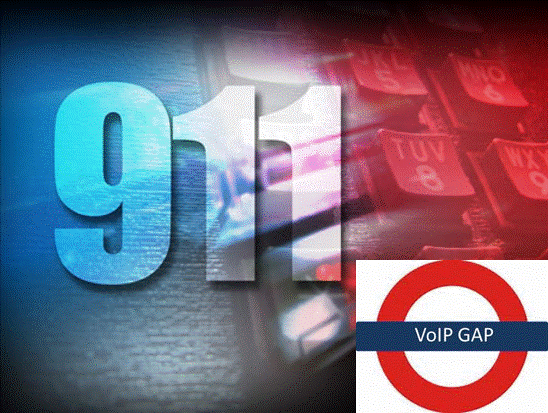One of the issues being wrestled with by the FCC is how to govern 911 requirements in a Voice over IP (VoIP) environment. Recently, the FCC conceded that VoIP end instruments were not reliable enough to guarantee a 911 call, and then elected to focus on the reliability requirements of Public Safety Answering Point (PSAP) call centers instead.
Per the FCC, telecommunications carriers responsible for servicing PSAP call center locations are required to ensure that the facilities have two connections to the Internet, with each circuit have physical diverse routes from the facility to the carrier network access point for the Internet. Additionally, the physical facilities hosting the call centers have to be equipped with generator power that can support up to 72 hours of full operations in the event of a primary power outage. This basically brings the reliability requirements up to what a commercial Central Office would be built to support. Part of the rationale is from lessons learned from past natural disasters (i.e. Hurricane Katrina, Sandy, etc.), where 911 call attempts when unanswered because the PSAP locations were “off the air”.
What isn’t being addressed is the reliability of VoIP down to the end instrument. In fact, the FCC basically states that service providers should label the handsets with “caution” messages informing the user that the phone is not guaranteed to support 911 calling. This is a huge step backwards from the reliable TDM Telephony service that supported 99.999% reliability and 1% probability of blocking. In fact, what is being passed off as acceptable for VoIP service is actually worse than an analog cellular experience. “Good” VoIP service is lucky to deliver on 99.5% reliability. To put that in context, that is like going from an acceptable 3 minutes a year of service outages to 1 hour and 28 min a year of service outages. For handsets not supported by Power over Ethernet (POE) that is being delivered from a POE Switch backed up by an Uninterruptable Power Supply (UPS), outages can be more frequent if the building suffers from frequent power outages or brownouts.
Unfortunately the cost of delivering TDM like quality of service and reliability over VoIP is expensive. Basically, each building would need to consider redundant paths to the Wide Area Network (WAN), and investing in UPS technology to deliver power to their POE infrastructure and network equipment in the event of primary power failures, which would cost thousands of additional dollars that can be avoided by forcing users to accept 99.5% reliability. Many business CIO’s will be more than willing to compromise the safety of their staff in return for lower CAPEX and OPEX exposure. I have heard it also said as sound rationale that users can just use their cell phone to make 911 calls if the VoIP phone fails. For single event scenarios like a women going into labor, or person having a heart attack, that is true; but for large scale disasters where hundreds (if not thousands) of people are flooding the cell towers with 911 call attempts, that logic quickly breaks down.
As our society continues to embrace the “Everything over IP” trend, this issue is one than needs careful consideration, as it only takes one person’s unnecessary fatality to cause us to question why we didn’t engineer the VoIP network and technology correctly to meet legacy 911 service requirements.


Great article! Though there may be some minor issues, I believe that VoIP is really a smart investment that our company made. We have been using the company Thinktel for more than 2 years for Internet telephony. Now we have higher productivity and reliability of our phone services.